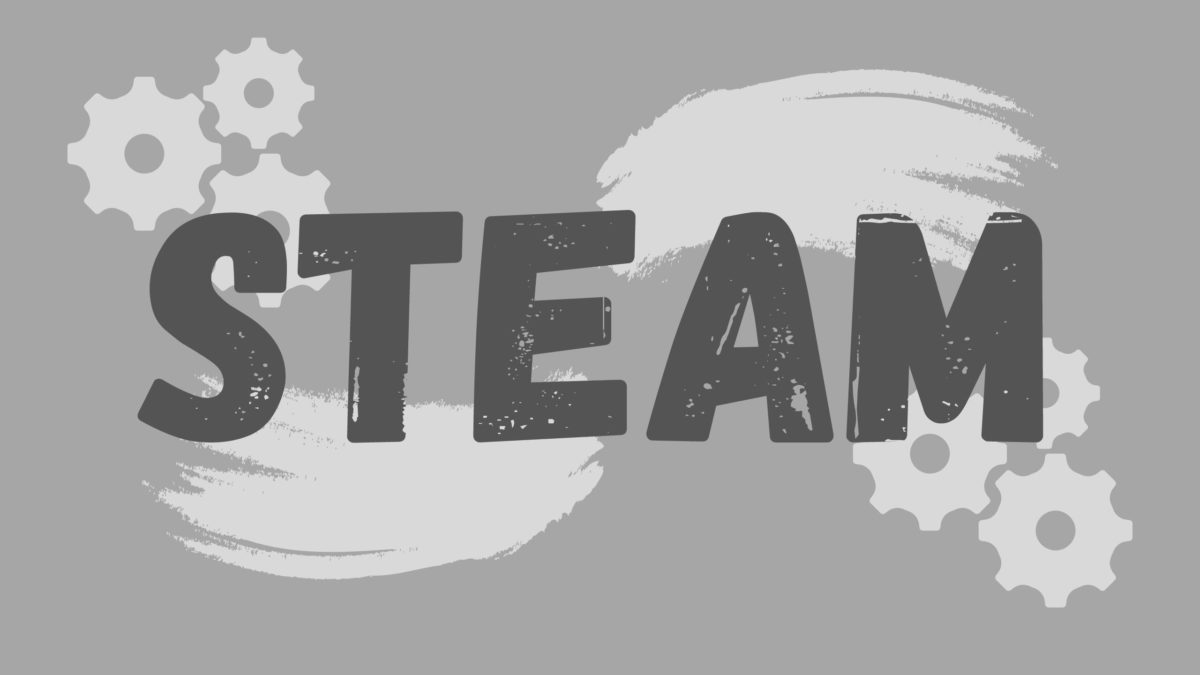No article has given me a straightforward definition of what STEAM is. Of course it stands for science, technology, engineering, arts and math. But it seems no one can tell me what exactly that means.
According to some, STEAM is the answer to all the world’s problems. Its goal is to create a mesh of STEM and the humanities subjects in STEM classrooms. These articles tend to be overly critical of STEM programs, as if STEM should not be a field of study on its own. Likewise, they never once mention that the arts can be a field of study on its own as well.
I found several articles that were almost exact copy-pastes of this same rhetoric down to the same exact bulleted lists.
While this is semi-effective marketing, it didn’t clear up the question of what STEAM was. It wasn’t until I found myself in the uncharted territory known as the “second page of search results” that I found an answer.
According to the University of Delaware, STEAM is a teaching philosophy that centers creativity in teaching students how to make innovative solutions to real world problems. In other words, STEAM just applies creative thinking to STEM.
I was not happy with this definition. I don’t think it gives the arts or STEM enough credit and I don’t think it is what STEAM should be.
As it is now, STEAM is trying to lump the arts in with STEM, with the main character of this narrative being, of course, STEM. The arts, quite frankly, can stand alone. The arts are an extremely complex and diverse set of subjects just like STEM. There is breadth and depth in performing arts, visual art, music and so much more. Similarly, STEM is comprised of four different disciplines—science, technology, engineering, and math—all of which have their own subjects and complexities.
So, if these disciplines are so totally separate, why is STEAM important? I believe that it is because humans will always be involved with technology, and new technologies will always have an impact on human art.
Take AI for example. As AI has grown in relevance and controversiality over the past few years, so has AI-generated art. Unsurprisingly, some artists are upset that their art is being used in datasets to train AI. Whether it’s ChatGPT or DALL-E, you can see aspects of human art in the AI creations because of these datasets.
Artists have the right to create and they have the right to own that creation. So STEM professionals need a firm grasp on what art is and what the ethics around art and humanity are. Likewise, artists need to understand AI to understand the potential plagiarism of their work.
There is no separating STEM and art while talking about AI, and that’s only one example. These two disciplines are linked whether we want them to be or not, so we need to be educated and equipped with the tools to handle it.
I believe the reason STEM is centered in a lot of talk about STEAM is because STEM professionals will often have an overinflated ego, this hubris. They think they don’t need the arts because science trumps all, so education needs to combat that. This is precisely the reason we’ve seen so much discourse between the arts and technology in the past years.
What I think one half of STEAM should be is STEM students taking core arts and humanities classes to help them understand the world around them through a non-scientific, non-factual lens. In order to be ethical professionals, STEM students need to reflect on the social implications of the things they create. What effect will technology have on the world around them? How can they create positively while centering the people that they affect? As much as we like robots, humans are at either end of every great invention or technological progression.
I’d be a hypocrite if I didn’t also mention the possibilities that artists have within STEM. Technology like laser cutters and 3D printers can easily be tools in an artist’s arsenal if they are educated on them.
I’d also be remiss not to mention the dangers technology poses to art. AI being the prime example, technology and STEM can and will try to take over art if given the chance. I believe artists should be educated on how those systems work and how to avoid their work being stolen or their humanity being taken from their creations.
Interdisciplinary work between the arts and STEM is my passion. I’m a computer science nerd who loves my science classes, and at the same time I will always be a poet and a writer. I love tech but looking out at the world around me with new technology, I’m honestly more scared than excited. Because the moment we start to create without any regard for the humanity of the people we affect is the moment technology becomes an obstacle, not a tool.




